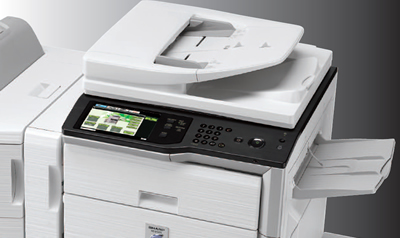Starting with accounting software can feel overwhelming, but Intuit QuickBooks, especially QuickBooks Enterprise 2025, is designed to simplify the process for businesses of all sizes. This guide aims to help beginners navigate QuickBooks effectively, enabling you to manage your finances with confidence and ease.
What Is QuickBooks?
QuickBooks is an accounting software suite developed by Intuit that helps businesses manage their financial tasks, including invoicing, payroll, expense tracking, and reporting. QuickBooks Enterprise 2025 specifically caters to larger organizations, offering advanced features, enhanced reporting capabilities, and personalized support.
Key Benefits of Using QuickBooks
- User-Friendly Interface: QuickBooks is designed with simplicity in mind. Even if you’re not a financial expert, you’ll find it easy to navigate.
- Automation: Automate routine tasks such as invoicing, payroll processing, and expense tracking. This saves time and minimizes errors.
- Real-Time Insights: Access real-time financial data and customizable reports to make informed decisions quickly.
- Scalability: As your business grows, QuickBooks can scale with you, offering features tailored to your evolving needs.
Getting Started with QuickBooks
Setting Up Your Account
- Sign Up: Go to the QuickBooks website and select the plan that suits your business needs. For larger enterprises, choose QuickBooks Enterprise 2025.
- Input Business Information: Fill in your business name, address, and industry type. This information allows QuickBooks to tailor its features for you.
- Customize Your Settings: Navigate to the “Settings” menu to adjust preferences such as currency, tax settings, and payment options.
Familiarizing Yourself with the Dashboard
Once your account is set up, take time to explore the dashboard:
- Navigation Bar: Located on the left side, the navigation bar provides quick access to sections like Dashboard, Sales, Expenses, and Reports.
- Quick Access Buttons: Use the “+ New” button to quickly create invoices, expenses, and other transactions.
Managing Your Finances
Creating and Sending Invoices
One of the most powerful features of QuickBooks is its invoicing capability. Here’s how to create and send an invoice:
- Go to Sales > Invoices: Click on “Sales” in the navigation bar and select “Invoices.”
- Create New Invoice: Click on the “Create Invoice” button.
- Fill in Customer Details: Select the customer from your list or add a new one. QuickBooks automatically pulls in their contact information.
- Add Invoice Items: Enter products or services provided, including quantities and prices.
- Customize Your Invoice: Add payment terms, due dates, and any relevant notes.
- Send Your Invoice: After reviewing, click “Save and Send” to email it directly to your customer.
Tracking Payments
Keeping track of payments is crucial for maintaining cash flow. QuickBooks allows you to monitor the status of invoices easily.
- Access Invoices: Go back to the “Sales” section and select “Invoices.”
- View Payment Status: You’ll see whether invoices are paid, unpaid, or overdue, allowing you to follow up as necessary.
Recording Payments
When you receive payments, it’s essential to record them accurately.
- Select the Invoice: From the Invoices section, find the invoice for which you’ve received payment.
- Record Payment: Click on “Receive Payment,” enter the payment details, and select the payment method.
- Save: Click “Save and Close” to update your records.
Managing Expenses
Entering Expenses
QuickBooks makes it easy to track your business expenses.
- Go to Expenses: Click on the “Expenses” tab from the navigation bar.
- Create New Expense: Click “New Expense” and fill in the details, including the vendor, date, and amount.
- Attach Receipts: Upload any relevant receipts by clicking the attachment option.
- Save the Expense: Click “Save and Close” to keep your records updated.
Categorizing Expenses
Proper categorization of expenses helps you understand your spending better and makes tax time easier.
- Create Categories: Under the Expenses section, create categories that reflect your business activities, such as travel, supplies, or utilities.
- Assign Categories: When entering an expense, select the appropriate category to ensure accurate reporting.
Running Reports
One of the significant advantages of QuickBooks is its powerful reporting capabilities.
Generating Financial Reports
- Navigate to Reports: Click on the “Reports” tab in the navigation bar.
- Choose a Report Type: QuickBooks offers various reports, such as Profit and Loss, Balance Sheet, and Cash Flow Statements.
- Customize Reports: You can customize the date range and filter criteria to get the information you need.
- Run the Report: Click “Run Report” to view the data. You can save, print, or export the report for your records.
Streamlining Payroll
For businesses with employees, managing payroll can be a daunting task. QuickBooks simplifies this process.
Setting Up Payroll
- Access Payroll Settings: From the dashboard, go to the “Payroll” section.
- Enter Employee Information: Add employees by entering their details, including job title, pay rate, and tax information.
- Run Payroll: When it’s time to pay your employees, go to the payroll section, select the employees to pay, and review the payroll summary.
- Process Payroll: Click “Submit” to process payments, and QuickBooks will handle tax calculations and withholdings.
Best Practices for QuickBooks Users
- Regularly Reconcile Accounts: Keep your accounts accurate by regularly reconciling them with bank statements.
- Utilize Keyboard Shortcuts: Familiarize yourself with keyboard shortcuts to navigate quickly within QuickBooks.
- Take Advantage of Online Resources: Intuit offers various tutorials, webinars, and support resources to help you maximize your QuickBooks experience.
- Stay Organized: Keep your financial documents organized and up to date to make bookkeeping easier.
- Backup Your Data: Regularly back up your QuickBooks data to prevent loss due to technical issues.
Conclusion
Navigating Intuit QuickBooks can significantly enhance your financial management capabilities, especially with the robust features of QuickBooks Enterprise 2025. By following this beginner’s guide, you can confidently set up and manage your finances, creating a solid foundation for your business growth.
Remember, practice makes perfect. The more you use QuickBooks, the more comfortable you’ll become. Embrace the power of QuickBooks, and watch your business thrive!









